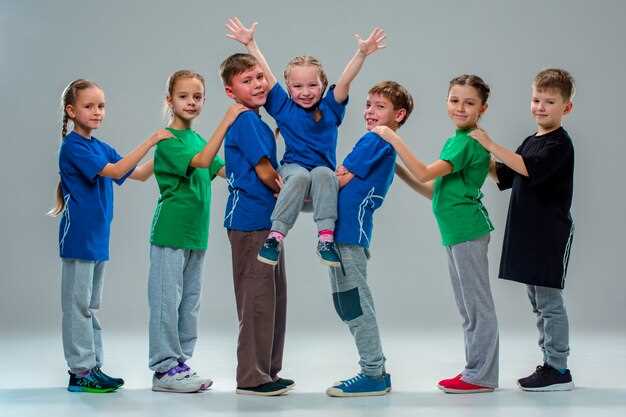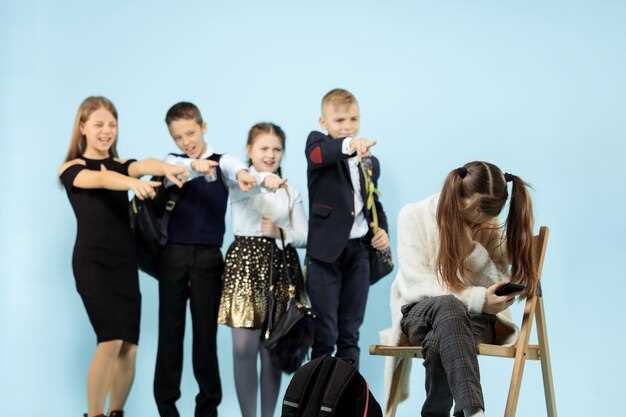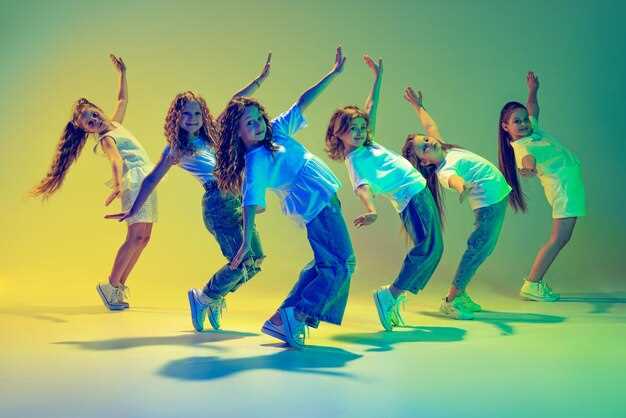Exploring the vibrant world of rhythmic expression can be an exhilarating journey. Many younger individuals are drawn to the art of movement, celebrating their creativity and energy. With a variety of options available, these activities offer not just entertainment, but also physical benefits. An ever-growing number of programs cater to diverse interests and abilities. What could be more exciting than discovering a form that resonates with one’s personality?
From lively beats to slow melodies, this realm is filled with opportunities. Each approach brings its own flair and excitement, allowing participants to showcase their individuality. Some prefer high-energy routines that leave them breathless, while others enjoy the grace of more intricate expressions. These activities can foster not only skill development but also lasting friendships and teamwork. Engaging in such practices cultivates confidence and an appreciation for movement in life.
As we delve into various forms, you’ll find that each offers unique benefits. Many have distinct histories and cultural backgrounds that enrich the experience. While some might focus on footwork, others emphasize fluid motions and storytelling through movement. The key is that every individual can find something that resonates personally. Whether it’s the rhythm, the challenge, or the sheer joy, there’s something here for everyone.
Top 5 Dance Styles for Kids and Teens

Exploring various forms of movement can ignite creativity and confidence. Many vibrant genres allow young individuals to express themselves uniquely. Each type offers its own excitement and benefits. Discovering these expressions can lead to lifelong passions and friendships. It’s all about joy and self-discovery through rhythmic exploration.
Hip-hop brings an electrifying energy that resonates with youth culture. This genre fuses street dance styles with music, encouraging individuality among participants. Breakdancing, locking, and popping introduce dynamic techniques for self-expression. The beats create an infectious atmosphere, making it popular among aspiring movers.
Jazz exudes flair and exuberance, captivating anyone who tries it. The combination of sharp movements and lively choreography stimulates imagination. Combining strong techniques with fun routines enhances coordination and flexibility. As children and adolescents engage with this genre, they develop a sense of rhythm and style that can last a lifetime.
Ballet provides a classic foundation, emphasizing grace and technique from a young age. The discipline helps develop strength, posture, and body awareness. Learning ballet also fosters patience and perseverance, essential skills in any aspect of life. Though it requires dedication, the rewards of mastering this art form can be profound.
Contemporary offers a blend of approaches, allowing freedom in expression. This versatile form combines elements of various genres, letting each dancer shine uniquely. Emotion plays a significant role, as participants use movement to convey feelings and stories. Through exploration, creativity flourishes, leading to personal growth and memorable experiences.
Finally, tap introduces a rhythmic element unlike any other, engaging feet to create music. Wooden floors become a canvas for intricate patterns and sounds. By focusing on timing and precision, participants develop synchronization with both music and movement. This genre is not just about dancing; it’s about entertaining and captivating an audience with every step.
Hip Hop: Energetic Movement for All

Hip hop is a vibrant expression of individuality and creativity. It offers a way to connect with music and rhythm. This dynamic form of movement encourages personal style. Participants of all ages can feel the freedom it brings.
The adrenaline rush is undeniable. Each session is filled with high-energy beats. It’s about more than just physical activity; it’s a cultural journey. Through intricate footwork and bold gestures, performers showcase their unique personalities.
Whether breaking, locking, or popping, this genre allows for constant innovation. The community support is incredibly empowering. Friends cheer each other on, fostering a sense of belonging. No other approach captures the essence of expression quite like this.
As dancers learn various techniques, they also develop discipline. Trust and teamwork grow within this energetic atmosphere. The spirit of competition is friendly and exhilarating. Here, everyone pushes each other towards greater heights, mixing flair with skill.
Ultimately, hip hop serves as a platform where passion meets rhythm, inspiring countless enthusiasts to move, create, and connect in extraordinary ways.
Benefits of Hip Hop Dancing
Engaging in rhythmic expression provides numerous advantages that extend beyond mere enjoyment. It fosters creativity, rhythm, and self-confidence in participants. The energetic movements encourage physical fitness and coordination. Additionally, it serves as a powerful means of self-expression. Through interactive sessions, individuals learn to communicate their emotions.
Dance offers an opportunity to connect with peers and build friendships. This art form promotes teamwork and encourages socialization, as many routines are performed in groups. The vibrant culture surrounding hip hop adds an extra layer of excitement. It inspires individuality while also fostering a sense of community.
| Benefits | Description |
|---|---|
| Physical fitness | Enhances cardiovascular health and strengthens muscles. |
| Self-expression | Offers a creative outlet to convey emotions and ideas. |
| Social skills | Encourages teamwork and builds lasting friendships. |
| Confidence | Boosts self-esteem through performance and mastery of skills. |
| Cultural awareness | Promotes understanding and appreciation of different backgrounds. |
Through these interactions and experiences, one can develop not only physical capabilities but also valuable life skills. The energy and excitement of hip hop create an inviting atmosphere that draws individuals in, allowing them to thrive on multiple levels.
Popular Moves to Learn
Mastering a few key techniques can make all the difference in any performance. These techniques are not just exciting; they also build confidence and creativity. Enthusiastic practitioners often find joy in exploring new expressions. Each movement has its own character and story. Together, they create a vibrant atmosphere, unlocking endless possibilities for personal style.
One of the most captivating steps to try is the moonwalk. It’s iconic and leaves a lasting impression. The pirouette is another essential, offering a chance to showcase balance and precision. Young learners can also have fun with the cabbage patch, which adds a playful vibe.
As students practice these movements, they will not only improve their technical capabilities but also develop a deeper connection to the rhythms and energies surrounding them, allowing their unique expression to shine through every performance.
Other exciting options include the dynamic body roll and the lively robot move. Each of these elements encourages creativity and self-discovery. By experimenting with these and others, everyone can find their own groove.
Finding the Right Class
Choosing the perfect class is an exciting adventure. It can also feel overwhelming. There are numerous options and factors to consider. Each student has distinct interests and abilities. Focusing on preferences is essential.
First, identify what captures their attention. Do they love fast-paced rhythms or slower melodies? Examining various genres can help narrow the choices. A well-rounded experience is important. However, deepening skills in specific areas can be equally fulfilling.
- Consider age suitability.
- Look for size of class.
- Evaluate instructor’s experience.
- Check the school’s overall environment.
Investing time in research leads to finding an environment where every student feels comfortable, excited, and dedicated to their progress. Encourage the child to participate in trial sessions when available. This provides a firsthand experience of the atmosphere and teaching style. Make sure they feel enthusiastic about their choice. Positive vibes are crucial!
Don’t forget to consider the schedule. Flexibility matters for busy lifestyles. Classes should fit seamlessly into their routine. Encourage fun, but balance it with commitment. Whichever class is chosen, ensure it’s a place where joy and passion thrive. The journey is just beginning!
Exploring Dance Forms for Youth

Movement has an incredible power to connect people. Every rhythm tells a different story. Young individuals express themselves through various forms of artistic motion. They discover joy, creativity, and a sense of community. There’s something magical about learning new techniques and styles. It allows them to explore their identities in a vibrant way.
Engagement in these artistic expressions fosters not only physical development but also emotional growth. As they twirl, leap, or groove, they build confidence and teamwork skills. Each style carries its own unique essence, inviting everyone to embark on a journey of self-discovery. By trying different forms, youth can uncover hidden talents and interests.
Diving into the world of rhythmic expression can transform lives dramatically. In this diverse landscape of performance, there are countless techniques to choose from, each offering its own exhilarating experience and enriching perspectives.
Contemporary Dance: Express Yourself Freely
In a world where self-expression reigns supreme, this genre offers a unique outlet for creativity. It encourages participants to explore their emotions and ideas through movement. Here, the body becomes a canvas, allowing performers to convey personal stories and feelings. Each session can lead to an exciting journey of discovery.
What sets this style apart? It embraces various influences, combining elements from multiple traditions. The movement can be fluid or sharp, slow or fast, and this versatility allows dancers to find their voice.
- Creates a safe space for exploration
- Encourages creativity and improvisation
- Allows for personal storytelling
- Fosters emotional connection and expression
With an emphasis on individuality, this form invites participants to think outside the box and express their inner thoughts uniquely. From dramatic leaps to graceful flows, the range of movement possibilities is endless, offering participants a chance to experiment without constraints.
Whether in a studio or on stage, the experience is transformative. Each dancer learns to harness their emotions, channeling them through their physicality. This not only promotes artistic growth but also enhances confidence and self-awareness.
- Discover personal style and interpretation.
- Engage with diverse musical genres.
- Collaborate with fellow performers for richer experiences.
Ultimately, the journey through this form is more than just mastering techniques; it’s about finding freedom in expression and developing an understanding of oneself in the process. Participants leave each session feeling empowered to embrace their identities and share their unique stories with the world.
Ballet: Foundation of Dance Techniques
Ballet serves as a cornerstone in the world of movement arts. Its emphasis on precision and grace captivates many aspiring performers. By mastering this form, students not only learn essential skills but also cultivate discipline. The elegance of ballet transcends basic techniques, encouraging creativity and expression.
Understanding this art form can be enlightening. It introduces key principles that underpin various other disciplines. Here are some fundamental aspects:
- Posture: Proper alignment is crucial for balance and control.
- Flexibility: Increased range of motion enhances overall performance.
- Strength: Core muscles are developed through various exercises.
- Coordination: Effortless movement is achieved by harmonizing body parts.
Each foundation laid in ballet fosters not just technical prowess but also emotional depth, enabling performers to convey stories with their bodies, inviting audiences to connect through the beauty of expression.
This discipline significantly develops attributes that are beneficial across multiple performance realms. Moreover, the community aspect encourages collaboration and support among peers, forming lasting friendships and bonds. As students progress, they discover the joy of movement. Ballet teaches that every leap and turn holds meaning.
Jazz Dance: Lively and Fun
Expressive and dynamic, this energetic genre captivates many. It’s all about movement and rhythm. Children tend to flourish in this vibrant art form. The beats are contagious, encouraging creativity and self-expression. With its lively tempo and improvisational spirit, this type of performance invites everyone to join in the excitement.
As participants step onto the floor, they find themselves immersed in a world of musicality. The excitement is palpable, whether through classic Broadway numbers or modern tracks. Young performers can easily adapt their personal style to suit the atmosphere. The combination of diverse techniques fosters increased confidence while building a strong foundation for future endeavors.
| Benefits of Jazz | Description |
|---|---|
| Improves Coordination | Enhances body awareness and movement control. |
| Builds Confidence | Encourages self-expression and performance skills. |
| Encourages Teamwork | Promotes collaboration through group routines and performances. |
| Boosts Creativity | Allows for personal interpretation and improvisation in routines. |
The combination of rhythm, fun, and creativity is hard to resist. Classes often feature a mix of techniques, engaging students fully. With a focus on expression, participants learn to embody the spirit of the music. Using different genres, from traditional to contemporary, their enthusiasm knows no bounds.
Tap Dance: Rhythm and Sound
At its core, this art form is a vibrant fusion of movement and auditory expression. Each step creates a beautiful melody that captivates audiences. It’s not just about the feet; it’s about the beat and timing. The sound of metal hitting the floor can evoke emotions, turning a simple sequence into an exhilarating experience. Every performance showcases individuality, energy, and creativity, which are vital in engaging spectators.
Children engaged in this dynamic practice often develop a unique sense of rhythm. As they stomp and shuffle, they discover how to sync their motions with the sounds they produce. Their feet become instruments, playing in harmony with the music. This not only enhances coordination but also instills a sense of confidence and accomplishment.
Above all, tap art offers an environment where expression thrives. The motivation to master intricate patterns leads to a profound appreciation for music and rhythm, allowing performers to feel connected to the art in a deeply personal way. With each lesson, they learn not just technique but also how to convey emotion and storytelling through their feet.
Incorporating elements from various musical genres, this activity serves as a bridge to creativity. It invites experimentation and encourages young performers to explore different tempos and styles. The possibilities are truly endless, making it an ideal pursuit for those eager to express themselves through sound and motion.
Video:
Easy Kids Choreography – (Hip Hop Dance Tutorial AGES 4+) | MihranTV
Easy Kids Choreography – (Hip Hop Dance Tutorial AGES 4+) | MihranTV by MihranTV 3,901,505 views 6 years ago 13 minutes, 30 seconds
Q&A:
What are the top dance styles recommended for kids and teens?
The top five dance styles recommended for kids and teens are hip-hop, ballet, jazz, contemporary, and tap dance. Each style offers unique benefits and can help young dancers express themselves, build confidence, and enhance their coordination. Hip-hop is energetic and allows for creativity, while ballet provides a strong foundation in technique. Jazz combines elements of various styles and is fun and upbeat, contemporary focuses on storytelling and emotions, and tap dance emphasizes rhythm and musicality. Choosing the right style depends on the child’s interests and personality.
How can dance benefit the physical and mental development of children?
Dance provides numerous physical and mental benefits for children. Physically, it improves flexibility, strength, balance, and coordination, which are essential for overall fitness. Mentally, dance helps enhance focus, discipline, and teamwork, as kids often work in groups and learn routines together. Additionally, dancing can boost self-esteem and provide an outlet for self-expression, helping children to manage emotions and build social skills. The joy of dancing can also reduce stress and promote a positive mindset.
Is it too late for my teen to start dancing if they have never danced before?
No, it is never too late for a teen to start dancing, even if they have no prior experience. Many dance studios offer beginner classes specifically designed for older novices, so they can learn at their own pace. Starting as a beginner can be a great way for teens to explore their interests, meet new friends, and develop a new skill. Dance can also provide an enjoyable way to stay active and energetic, making it a great choice for those new to the art form.
What should I look for when choosing a dance class for my child or teen?
When choosing a dance class, consider several factors: the class’s level and style, the experience and qualifications of the instructor, the class size, and the studio’s environment. Look for classes that match your child’s interests and skill level, as well as instructors who foster a positive and supportive atmosphere. It’s also helpful to visit the studio beforehand to see if it feels welcoming. Engaging with other dance parents and reading reviews can provide insight into the studio’s reputation and community.
Are there any specific skills or qualities that young dancers develop through these dance styles?
Yes, young dancers develop a variety of skills and qualities through dance. Physically, they gain strength, flexibility, coordination, and balance which can contribute to overall fitness. Socially, dance encourages teamwork and communication, as dancers often collaborate in groups or performances. Emotionally, dance promotes self-discipline, focus, and resilience, as mastering dance routines requires practice and perseverance. Additionally, creative expression is a significant benefit, as dance allows children to convey their feelings and ideas through movement.
What are the top benefits of dance for kids and teens?
Dance offers numerous benefits for kids and teens, both physically and emotionally. Physically, dance helps improve flexibility, strength, and coordination. It also promotes cardiovascular fitness by keeping young dancers active. Emotionally, dance encourages self-expression and creativity, giving kids a healthy outlet for their feelings. Additionally, participating in dance can boost self-esteem and confidence, as children learn and master new skills. Socially, dance classes provide opportunities for teamwork and building friendships, which are vital during these formative years. Overall, engaging in dance can contribute significantly to a young person’s development.
What styles of dance are most popular among young dancers today?
Among young dancers, several styles are particularly popular. Hip-hop is a favorite due to its energetic beats and freestyle elements, allowing kids to express themselves creatively. Contemporary dance combines various techniques and emphasizes individual expression, making it appealing for those who enjoy storytelling through movement. Ballet, while more traditional, remains popular because of its foundational techniques that enhance strength and grace. Jazz dance incorporates lively rhythms and is fun for kids who enjoy upbeat music. Lastly, tap dance captivates many with its focus on rhythm and sound, offering a unique way to connect with music. Each of these styles provides a fun learning experience and the potential for young dancers to explore their passions.
